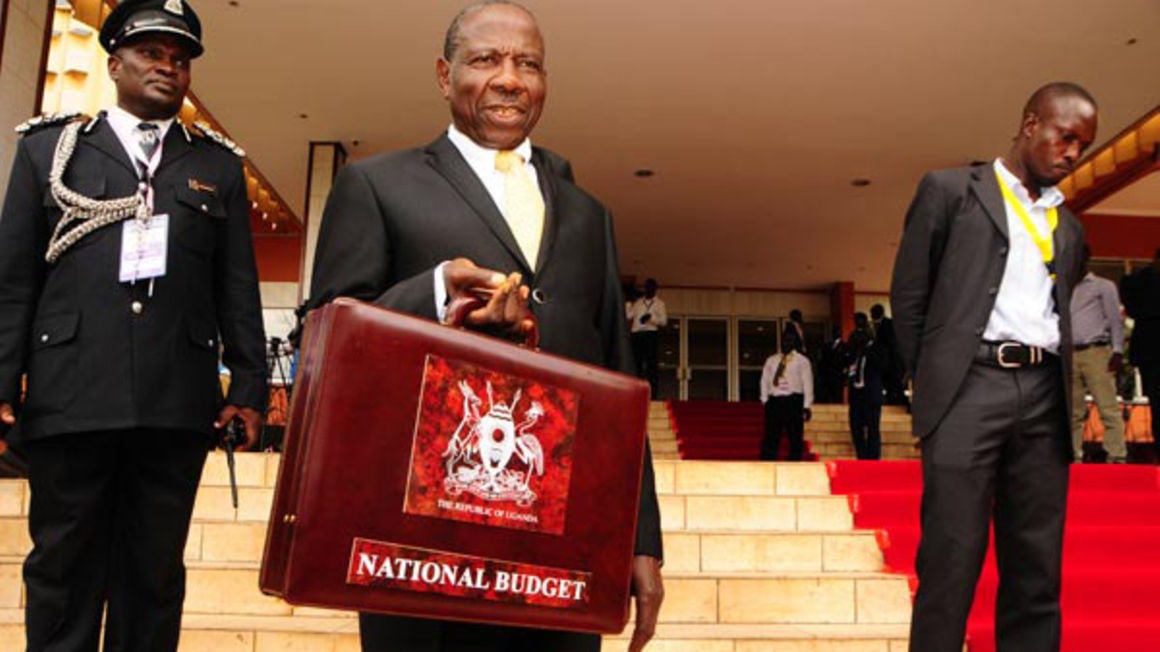Prime
Who lends money to Uganda?

Finance Minister Matia Kasaija arriving for the budget reading at the Kampala Serena Hotel. PHOTO/ FILE
What you need to know:
- Bilateral creditors categorised into Paris club and non-Paris club took up 6.8 per cent ($790 million) and 22.7 per cent ($2.65 billion) respectively, whereas commercial banks held a share of 7.6 per cent an equivalent of $890 million.
- The biggest lenders include the International Development Association ($3.4b), China Exim bank ($2.6b) and African Development Bank ($1.4b) as of March 2020.
After months of brushing off concerns about the growing national debt, Finance minister Matia Kasaija yesterday said government will seek to reschedule payments, on the day this newspaper revealed each Ugandan now owes Shs1.5 million.
In an interview with Reuters news agency, Mr Kasaija revealed that repayments of the debt, now at $17.96 billion (Shs66 trillion) if domestic debt is included, might have to be renegotiated with major creditors, including China and the World Bank.
“I will approach them. I will not hesitate to approach them and say, ‘you guys can we suspend servicing these loans for, say, maybe two years?” Reuters quoted him as saying.
On Friday, Mr Kasaija also expressed frustration with the high levels of borrowing but claimed he was powerless to stop it.
“I am not a fan of borrowing,” he said, “but the current situation has made it difficult to survive without borrowing.”
The current national debt represents 47.2 per cent of the Gross Domestic Product, the measure of all economic output in the economy in a given year, and is close to the 50 per cent level that some experts believe is a borrowing ceiling.
Last year alone, Uganda borrowed more than Shs15 trillion, the single largest borrowing in a year, owing to the Covid-19 pandemic and reduced tax revenues. Uganda was the first country to benefit from the Heavily-Indebted Poor Countries (HIPC) initiative, which offered a number of low-income countries an opportunity to negotiate a reduction of their external debt.
In 1998, the country received $650m in debt relief from its external creditors following reforms demanded by the World Bank and the International Monetary Fund (IMF).
In the early 2000s, another $1.3 billion was written off to allow the country to use its resources to reduce poverty.
However, the debt relief created room for a new borrowing spree, officially for infrastructure investments but many projects have been riddled with corruption or missed deadlines and come in above budget.
The Civil Society Budget Advocacy Group (CSBAG), an advocacy group, says the rising debt level is becoming unsustainable.
“We are right to be concerned about our growing debt levels and we should focus on whether we can repay our obligations without unduly hurting our development ambitions and are we borrowing for the right reasons?” it said in a statement.
“We note that under-absorption of loans has led to an increase in the cost of loans hence leading to low returns on public investments,” the civil society organisations noted.
READ:
“We, therefore, call upon government to improve on efficiency in public investment management by exercising due diligence and addressing issues relating to project identification, appraisals and absorptive capacity of public debt financed projects,” the CSOs said.
The Uganda Debt Network, which campaigns against public debt, warned that debt was rising faster than economic output.
The network’s director of programmes, Mr Julius Kapwepwe, said borrowing locally to pay off public debt had almost doubled, from about Shs4 trillion in 2015 to Shs7.7 trillion this financial year, despite government promises to reduce it.
Mr Kapwepwe said government must reverse the policy of selling off state-owned enterprises (SEOs) and take the lead in kick-starting high-value but capital-intensive investments, such as in iron and steel manufacturing, as well as recapitalise entities such as the army-run National Enterprise Corporation.
“Operation Wealth Creation (OWC) must be more aggressive and take lead in fostering profitable public enterprises in liaison with Uganda Development Corporation through strict monitoring of the implementation of strategic state-led enterprises for purposes of revenue generations to the budget in order to lessen government borrowing over the medium term,” he said.
OWC is a military run agro-enterprise initiative that has posted mixed results.
Mr Kapwepwe called for a smaller and more efficient government to use borrowed money more effectively.
Our creditors
The Finance ministry says multilateral creditors are the biggest lenders to Uganda, accounting for 64 per cent, followed by bilateral agencies.
“Out of the total $11.67 billion of external debt, 49.1 per cent equivalent to $5.73 billion is a share held by major multilateral creditors, while other multilateral creditors held 13.8 per cent, equivalent to $1.61 billion,” according to the Status of Debt Report from December 2020.
Bilateral creditors categorised into Paris club and non-Paris club took up 6.8 per cent ($790 million) and 22.7 per cent ($2.65 billion) respectively, whereas commercial banks held a share of 7.6 per cent an equivalent of $890 million.
At the end of last year, external debt was $11.7 billion (Shs42.6 trillion, or 65 per cent) while domestic debt, at 35 per cent, was equivalent to $6.3 billion (Shs22.9 trillion).
The biggest lenders include the International Development Association ($3.4b), China Exim bank ($2.6b) and African Development Bank ($1.4b) as of March 2020.
On the domestic front, commercial banks held 79.7 per cent in government securities totalling Shs3.6 trillion, followed by other financial institutions at Shs284.4b. Pensions and provident fundshold Shs213.8b. Pension and provident funds are the biggest investors in long-term domestic debt at Shs6.8 trillion followed by commercial banks (Shs3.5 trillion) and microfinance and Saccos (Shs111b).
Some of Uganda’s creditors
IDA - 3.4 billion,
China - US$ 2.6 billion.
ADB/F - 1.4billion
Stanbic Bank and the Trade and Development Bank (TDB) - $725.7M
IMF - $491.5 Million
Trade and development Bank - $300 million
World Bank- $300 million Covid-19 budget support loan
Japan - 300million
Germany - unknown
France – unknown
Korea – unknown






